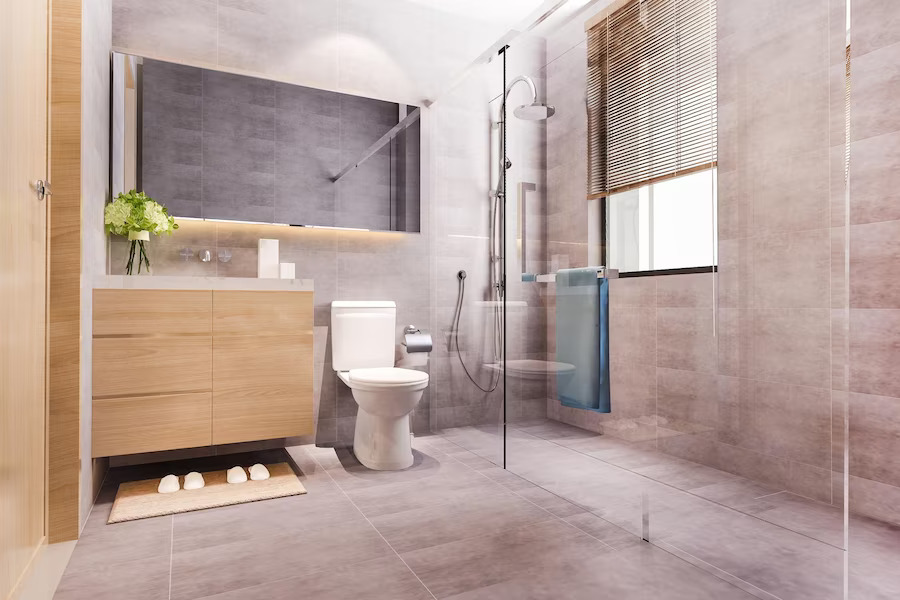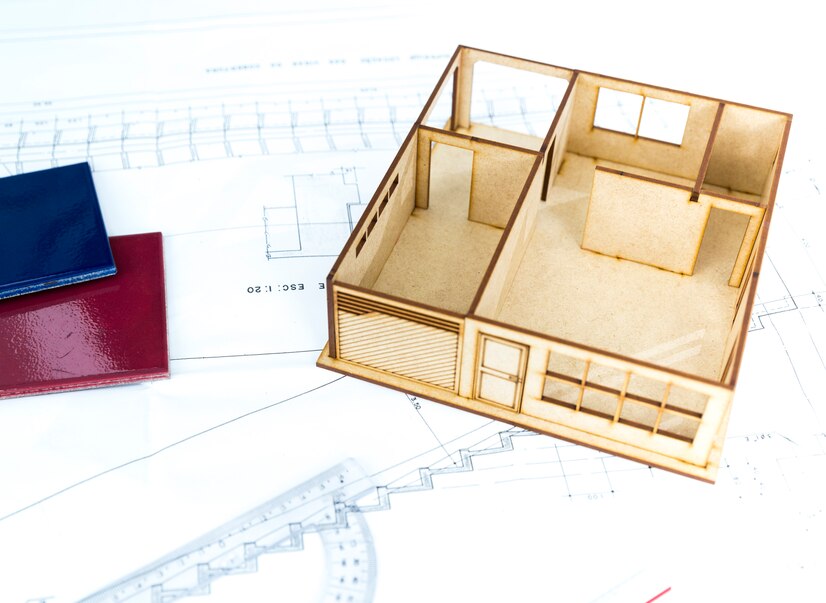Are you struggling with designing a functional and aesthetically pleasing floor plan for your small bathroom? You’re not alone! Many homeowners face the challenge of making the most out of limited space while ensuring their bathroom remains practical and visually appealing. In this article, we will explore some key considerations for designing a small bathroom and provide you with inspiring floor plan for small bathroom to transform your compact space into a stylish oasis.
Importance of a Floor Plan for Small Bathroom
A well-designed small bathroom can significantly enhance your home’s overall functionality and comfort. Despite its limited size, a thoughtfully planned bathroom can offer efficient storage solutions, maximize space utilization, and create an inviting atmosphere. Whether you have a tiny powder room or a small en-suite, investing time and effort in designing the perfect floor plan is essential.

Utilizing Optimal Layout
One of the primary challenges of designing a small bathroom is to make it appear more spacious than it is. A thoughtful floor plan can achieve this by utilizing the available space optimally. By strategically placing fixtures, such as the sink, toilet, and shower, it is possible to create a layout that maximizes open areas and minimizes cramped spaces. A well-designed floor plan considers traffic flow, clearance requirements, and the placement of each element to ensure a seamless and comfortable experience.
Incorporating Storage Solutions
Clutter can quickly make a small bathroom feel even smaller. An effective floor plan integrates storage solutions seamlessly, providing ample space for toiletries, towels, and other essentials. Built-in cabinets, wall-mounted shelves, and creative use of vertical space can help declutter the bathroom and create an organized and inviting atmosphere. You can enhance functionality by cleverly integrating storage options into the floor plan while maintaining a visually appealing design.
Efficient Traffic Flow
In a small bathroom, every inch of space counts. A well-designed floor plan considers the flow of traffic and ensures enough room to move around comfortably. By considering the position of fixtures and optimizing their placement, you can prevent congestion and create a bathroom that is easy to navigate. Carefully considering door swings, clearances, and the placement of elements such as towel bars and hooks contributes to an efficient traffic flow within the limited space available.
Accessible Design
Designing a bathroom with accessibility in mind is crucial for individuals with mobility challenges or those who plan to age in place. A well-planned floor plan can accommodate accessibility features such as grab bars, shower benches, and wider doorways without compromising style. Integrating these elements seamlessly into the layout ensures that the bathroom remains safe and functional for everyone, regardless of mobility limitations.
Creative Design Solutions
A small bathroom doesn’t mean you have to sacrifice style. With a well-thought-out floor plan, you can incorporate creative design solutions that add visual interest to the space. There are countless ways to infuse personality and style into a small bathroom, from unique tile patterns and color schemes to innovative lighting fixtures and mirrors. The strategic placement of these design elements within the floor plan enhances the overall aesthetic appeal and creates a visually pleasing environment.
Natural Light and Ventilation
Proper lighting and ventilation are crucial in any bathroom, and small bathrooms are no exception. A well-designed floor plan takes advantage of natural light sources, such as windows or skylights, to create an open and inviting atmosphere. Additionally, incorporating effective ventilation solutions ensures that the bathroom remains fresh and prevents moisture buildup, which can lead to mold and mildew issues. The placement of windows, light fixtures, and ventilation systems should be carefully considered within the floor plan to optimize these essential aspects.
Factors to Consider When Designing a Small Bathroom
Size and Layout Constraints
The first step in designing a small bathroom is understanding the size and layout constraints. Take accurate space measurements, including walls, windows, and doors. Consider any structural limitations and plumbing requirements. These details will be crucial in determining the feasibility of different floor plans.
Storage Solutions
Storage is a common challenge in small bathrooms. Explore innovative storage solutions such as built-in shelves, recessed cabinets, or wall-mounted organizers to optimize space. Utilizing vertical space effectively can help accommodate towels, toiletries, and other essentials.
Lighting and Color Schemes
Proper lighting and color schemes can greatly impact a small bathroom’s perceived size and ambiance. Use bright, light colors to create an illusion of spaciousness. Incorporate well-placed lighting fixtures to ensure ample brightness and eliminate dark corners.
Fixtures and Fittings
Choosing the right fixtures and fittings is crucial in maximizing space utilization. Opt for compact options such as corner sinks, wall-hung toilets, and slim-profile bathtubs or showers. These space-saving fixtures provide functionality and add a touch of modernity to your bathroom.
Accessibility and Safety
Consider the accessibility and safety aspects of your small bathroom design. Ensure there is enough room for comfortable movement and install grab bars or handrails if needed. Also, choose slip-resistant flooring materials to prevent accidents.
Clever Space-Saving Ideas for Small Bathrooms
Now that we have discussed the important factors to consider, let’s explore some clever space-saving ideas for small bathrooms:
Compact Fixtures and Fittings
Invest in compact fixtures and fittings specially designed for small spaces. Look for toilets with concealed cisterns, slim-profile sinks, and space-saving showers. These options provide the necessary functionality while taking up minimal floor space.
Wall-Mounted Storage Solutions
Utilize the vertical space in your small bathroom by incorporating wall-mounted storage solutions. Install floating shelves, cabinets, or racks to store towels, toiletries, and other essentials. This not only keeps everything organized but also frees up valuable floor space.
Mirrors to Create an Illusion of Space
Strategically place mirrors to create an illusion of a larger bathroom. Mirrors reflect light and give the impression of depth, making your small bathroom appear more spacious and open.
Utilizing Vertical Space
Make use of vertical space by installing tall cabinets or shelving units. These provide ample storage while keeping the floor area clutter-free. You can store linens, cleaning supplies, or even decorative items in these vertical storage solutions.
Hidden Storage Opportunities
Explore hidden storage opportunities in your small bathroom. Consider installing cabinets or drawers beneath the sink, utilizing space above the toilet tank, or incorporating a recessed medicine cabinet. These hidden storage options maximize space without compromising on style.
Popular Floor Plans for Small Bathrooms
When it comes to small bathroom floor plans, several layouts work well in compact spaces. Let’s explore some popular options:
Single-Wall Layout
The single-wall layout is ideal for narrow bathrooms. It features a straight-line configuration with all fixtures placed along one wall. This layout maximizes space and creates a clean, minimalist look.
Galley Layout
The galley layout is suitable for longer, narrower bathrooms. It involves placing fixtures on both walls facing each other, creating a corridor-like design. This layout provides efficient space utilization and allows for a streamlined flow.
L-Shaped Layout
The L-shaped layout utilizes two walls and is perfect for small bathrooms with a corner. It allows for a separate shower area or bathtub while keeping the remaining space open and functional.
Corner Layout
Consider a corner layout if you have a bathroom with an awkward corner. This layout places fixtures diagonally across the corner, efficiently using space that would otherwise be wasted.
Wet Room Layout
A wet room layout is a stylish and modern option for small bathrooms. It involves creating a fully waterproofed space where the shower area is not separated by a traditional enclosure or tub. This layout opens up the space and gives a spa-like feel.
Example Floor Plans for Small Bathrooms
Now let’s dive into some example floor plans that demonstrate how different layouts can work in small bathrooms:
Floor Plan 1: Single-Wall Layout with Corner Shower
In this floor plan, all fixtures are placed along a single wall, with a corner shower taking advantage of the available space. The toilet and sink are positioned on either side of the shower, creating a compact and functional arrangement.
Floor Plan 2: Galley Layout with Freestanding Tub
This floor plan features a galley layout with a freestanding tub opposite the vanity and toilet. The narrow space is utilized effectively, with ample room for movement and a visually pleasing design.
Floor Plan 3: L-Shaped Layout with Walk-in Shower
In this L-shaped layout, the toilet and vanity are placed on one wall, while the walk-in shower is on the adjacent wall. This configuration separates different areas while maintaining an open and spacious feel.
Floor Plan 4: Corner Layout with Vanity Nook
The corner layout utilizes the available corner space to create a vanity nook. The toilet and shower are placed on one wall, while the vanity is positioned diagonally across the corner, making the most of the available room.
Floor Plan 5: Wet Room Layout with Open Shower
The wet room layout is an excellent choice for those who prefer a modern and luxurious design. This floor plan eliminates the need for a separate shower enclosure and creates a seamless, open space for showering.
Choosing the Right Floor Plan for Your Small Bathroom
When selecting a floor plan for your small bathroom, consider the size and shape of the room, as well as your personal preferences and requirements. Assess the pros and cons of each layout and determine which one best suits your needs. Don’t hesitate to seek professional advice from an interior designer or contractor if you need guidance in making the final decision.
Recommended Brands and Models for Small Bathroom Fixtures
To ensure a high-quality and functional small bathroom, choosing reliable brands and models for your fixtures is important. Here are some recommended options:
Kohler Veil Intelligent Toilet:
This smart toilet combines functionality and space-saving design. It features a tankless design, a compact footprint, and a range of high-tech features like a heated seat, bidet functionality, and self-cleaning capabilities.
Toto Aquia Dual-Flush Toilet:
Toto is a reputable brand known for its high-quality toilets. The Aquia model offers a sleek and compact design, with a dual-flush system that helps save water. It has a small footprint, making it ideal for small bathrooms.
Duravit Happy D.2 Washbasin:
Duravit is a renowned brand for bathroom fixtures, and the Happy D.2 series offers elegant and space-saving options. The washbasin in this collection features a compact size and a modern design, making it a great choice for small bathrooms.
American Standard Boulevard Pedestal Sink:
American Standard is known for its reliable and durable bathroom fixtures. The Boulevard Pedestal Sink offers a classic look with a space-saving design. It is compact and provides storage space underneath the sink.
Hansgrohe Raindance Select Showerhead:
Hansgrohe is a trusted brand for shower fixtures, and the Raindance Select series offers a variety of showerheads suitable for small bathrooms. These showerheads provide a luxurious shower experience while being compact in size.
Moen Eva Single-Handle Faucet:
Moen is a popular brand known for its stylish and functional faucets. The Eva Single-Handle Faucet is a compact option with a sleek design that works well in small bathrooms. It provides water efficiency without compromising style.
Delta BreezSlim Ventilation Fan:
Proper ventilation is essential for small bathrooms. The Delta BreezSlim Ventilation Fan is a compact, energy-efficient option that removes moisture and odors. It fits well in small spaces and operates quietly.
Remember to consider the specific measurements and layout of your bathroom when selecting fixtures to ensure they fit properly. It’s also advisable to consult with a professional plumber or designer for personalized recommendations based on your bathroom’s requirements.
Conclusion
Designing a functional and visually appealing floor plan for a small bathroom requires careful consideration of various factors. You can transform your compact bathroom into a comfortable and stylish retreat by optimizing space utilization, incorporating clever storage solutions, and selecting the right fixtures. Remember to choose a floor plan that suits your needs and seek inspiration from the example layouts. With the right approach and attention to detail, your small bathroom can become a space you’ll love.
FAQs
1. Can I install a bathtub in a small bathroom?
Absolutely! There are compact bathtub options available that can fit well in small bathrooms. Look for freestanding or corner tubs that optimize space while providing a luxurious bathing experience.
2. How can I make a small bathroom appear larger?
Using light colors, installing mirrors, and maximizing natural light can create the illusion of a larger space. Additionally, keeping the room clutter-free and utilizing vertical storage solutions can help open up the bathroom visually.
3. Are wet room layouts suitable for small bathrooms?
Yes, wet room layouts can work well in small bathrooms. They eliminate the need for a separate shower enclosure, making the space feel more open and spacious. However, proper waterproofing and drainage are crucial for wet room installations.
4. Should I hire a professional for small bathroom design?
If you’re unsure about designing your small bathroom or need expert advice, it’s recommended to consult with an interior designer or contractor. They can provide valuable insights and help create a functional and visually appealing floor plan.
5. Where can I find more inspiration for small bathroom designs?
You can find inspiration from home improvement websites, interior design magazines, and social media platforms like Pinterest and Instagram. Explore different styles, color schemes, and layouts to find ideas that resonate with your personal taste and preferences.








